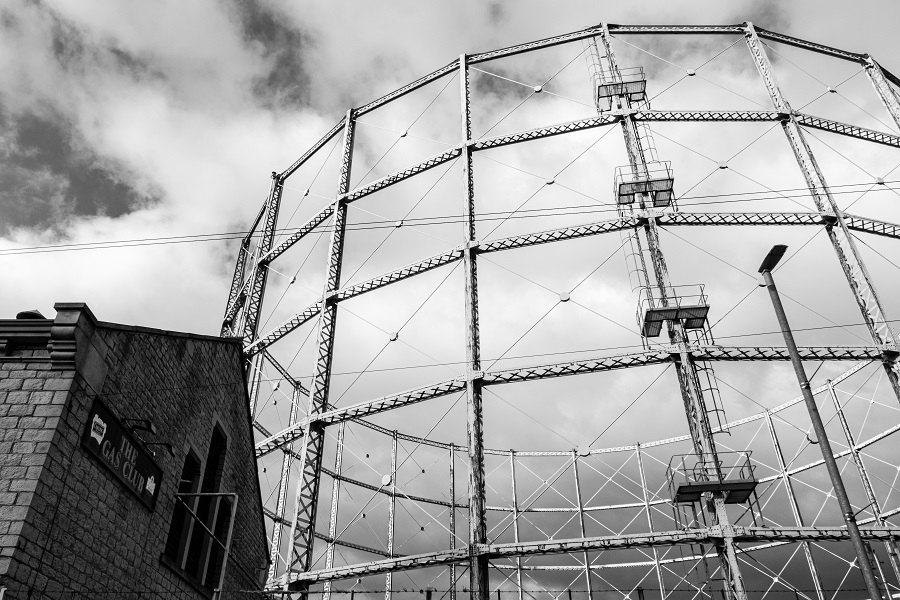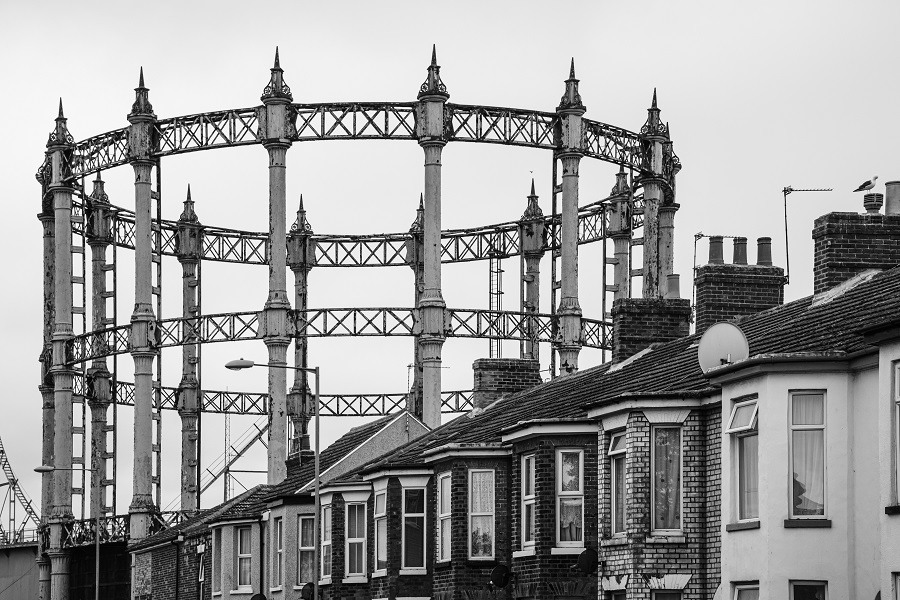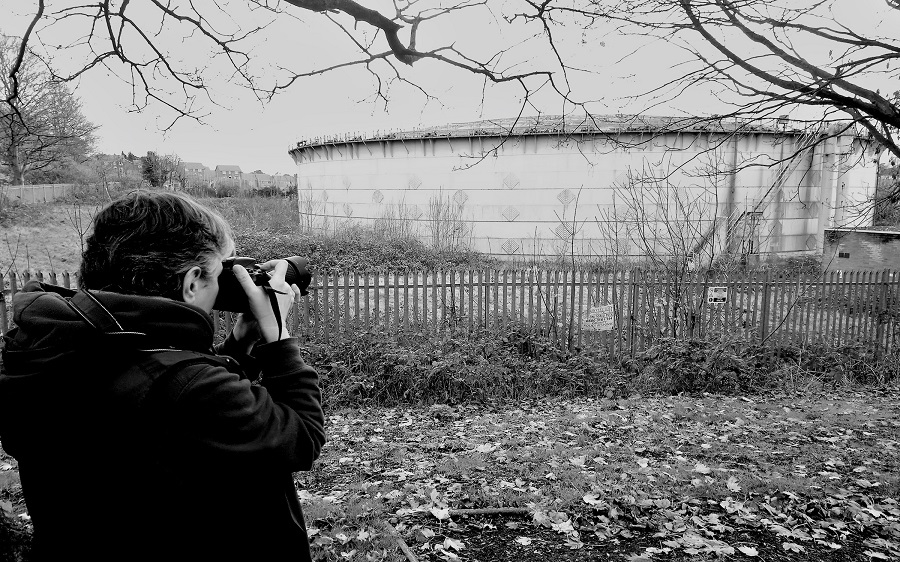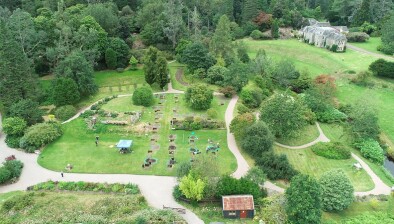And finally… Britain’s gas holder history preserved in new photobook
For more than 200 years, gas holders have been a feature of Britain’s skyline. In towns and cities up and down the country, gas holders have stood as a visual reminder of our industrial past.

Decommissioned features striking black and white images of 120 of Britain’s last remaining gas holders, including this image of the Huddersfield holder
But the industry has evolved since gas holders were first constructed to hold town gas in the nineteenth century. It’s now more efficient to store natural gas underground and some holders have stood unused for decades. The time has come for these iconic structures to be safely dismantled, making way for a new era in the energy industry.
Photographer Laura Fisher has been on a five-year journey to capture Britain’s last-remaining gas holders, culminating in the publication of a new photobook called Decommissioned.
Medway-based Laura explained: “Decommissioned started life as a photography project during my first year at university, when I was looking at the environment and the British landscape. After finishing my studies, my awareness of the decommissioning programme drove me to want to document and archive the UK’s last remaining gas holders before they disappeared from our landscape for good. Before I knew it, I had embarked on a five-year expedition that resulted in me capturing 120 gas holder sites across England, Scotland and Wales.
“The project was such a fantastic opportunity for me to see parts of the UK I probably would never have seen otherwise. I travelled thousands of miles between locations and as time went on, I began to regard the holders as my friends. It was as though I was taking their portraits. I grew attached to each and every one.
“I was fascinated by the stories that I uncovered from the communities that lived and worked around the holders. I’ll always remember the maintenance technician at a gas holder in the West Country who told me how as a child, his father – who had also been a maintenance technician at the same site – took him up to the top of the holder to watch the air show from the best viewpoint in town.”

Laura’s favourite gas holder from the 120 sites she captured is Great Yarmouth
With Laura’s passion for black and white documentary-style photography, it was only natural that all the images in the 170-page book were presented in black and white. Some holders proved more challenging to photograph than others and the photobook showcases these striking structures from different angles and viewpoints.
Thanks to generous support from organisations including gas network company SGN, Laura’s dream of creating a gas holder photobook has now come to life.
Laura added: “When I looked at the first printed copy, I was relieved and overwhelmed at the same time. The project has been an emotional rollercoaster from start to finish and it took a while for what I had achieved to sink in.”
Denis Kerby, head of communications at SGN, said: “Laura has created something very special with Decommissioned. She has created an incredible visual archive of our industry’s proud legacy of heating Britain’s homes and businesses, at a time when we’re excitedly looking forward to a new chapter in the UK’s energy industry as we work to achieve net zero.
“As we move into a decarbonised world where our networks will be transporting hydrogen rather than natural gas, it’s important we celebrate the evolution of the gas industry for future generations to appreciate. Laura has preserved the legacy of Britain’s gas holders forever in her stunning photobook.”

Laura in action, capturing her final gasholder in Worcester
You can find more of Laura’s work on Instagram and copies of Decommissioned can be purchased by contacting Laura directly at laurafisher007@sky.com.
















